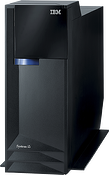 Whenever I am asked what Townsend Security does I have to explain that we aren't in the business of deploying security cameras or contracting out shopping mall guards. We are actually a software security vendor for the IBM i (AS/400) platform. It's usually at this point the recipient's eyes glaze over and I am left simply stating that I am in the 'computers' field. On occasion however I will be chatting with a colleague who also works in the tech industry who will scoff when they hear the name AS/400, iSeries, Systemi (take your pick). Often I'll hear, "Whoa, that's legacy technology. You have customers still using that platform?"
Whenever I am asked what Townsend Security does I have to explain that we aren't in the business of deploying security cameras or contracting out shopping mall guards. We are actually a software security vendor for the IBM i (AS/400) platform. It's usually at this point the recipient's eyes glaze over and I am left simply stating that I am in the 'computers' field. On occasion however I will be chatting with a colleague who also works in the tech industry who will scoff when they hear the name AS/400, iSeries, Systemi (take your pick). Often I'll hear, "Whoa, that's legacy technology. You have customers still using that platform?"
The simple answer is “yes”, many of the companies that we rely on for consumer needs, medical services and entertainment, to name a few, depend upon the stability of IBM's iSeries platform. It's the system that you rarely have to IPL. As a matter of fact, I was surprised to learn many of the casinos in Nevada and N.J. run on AS/400's.
However, despite the pervasive use of the platform, is it legacy? The AS/400 was introduced in 1988 and is actually younger than the PC! Much like the PC, IBM rolls out continuous hardware and software improvements to keep the platform stable and secure. As a matter of fact, I am sure many of you are planning to upgrade your systems as V5R4 nears its EOL date later this year. Take a look at this blog on why skipping V6R1 and going straight to V7R1 will benefit you.
Security on the IBM i
Townsend Security offers a variety of security solutions to help your business meet regulatory compliance. In addition to our AES encryption and key management offerings for the enterprise platforms, we offer solutions specifically for the IBM i (AS/400). For instance, FTP manager, our secure managed file transfer offering, can automatically transfer PGP encrypted files using sFTP or SSL to banks or trading partners. Or Alliance LogAgent, our system logging solution, can be used to capture all your logs from your AS/400's audit journal and transmit them via UDP,TCP, or SSL to a log collection server to just name a few.
For more information on data privacy, download our podcast Data Privacy for the Non-Technical Person. Patrick Townsend, our Founder & CTO, discusses what PII (personally identifiable information) is, what the most effective methods for protecting PII, as well as the first steps your company should take towards establishing a data privacy strategy.


 Former Mayor Daley’s goal of having a camera on every street corner in Chicago is slowly becoming a reality. The idea behind cameras at intersections is to create additional revenue and increase safety. The cameras take a quick snapshot of your car if you decide to make your trip quicker by zooming through a red light. Current Mayor Emanuel has continued the initiative by blanketing close to half the city with cameras to catch prospective speedsters. With the extra cameras, the Chicago police department is now able to track an automobile by taking a picture of the license plate and following it throughout the city. If proper data encryption practices are not implemented, this could result in a dangerous violation of the average person’s right to privacy.
Former Mayor Daley’s goal of having a camera on every street corner in Chicago is slowly becoming a reality. The idea behind cameras at intersections is to create additional revenue and increase safety. The cameras take a quick snapshot of your car if you decide to make your trip quicker by zooming through a red light. Current Mayor Emanuel has continued the initiative by blanketing close to half the city with cameras to catch prospective speedsters. With the extra cameras, the Chicago police department is now able to track an automobile by taking a picture of the license plate and following it throughout the city. If proper data encryption practices are not implemented, this could result in a dangerous violation of the average person’s right to privacy. It is increasingly apparent how much smaller the world is getting. As long as there has been human civilization, technology has decreased the vast uncertainty of our universe. We are a far cry from the 15th century, when the European elite didn’t know North America existed. Bell invented the telephone, and suddenly months of correspondence could be condensed into a five minute chat. Then came the personal computer and opportunities for seemingly everything in the world were endless. As the complete paradigm shift to cyber data happened, the increasing dependability on what is put on the net became a way of life.
It is increasingly apparent how much smaller the world is getting. As long as there has been human civilization, technology has decreased the vast uncertainty of our universe. We are a far cry from the 15th century, when the European elite didn’t know North America existed. Bell invented the telephone, and suddenly months of correspondence could be condensed into a five minute chat. Then came the personal computer and opportunities for seemingly everything in the world were endless. As the complete paradigm shift to cyber data happened, the increasing dependability on what is put on the net became a way of life. Some years ago, during an “in between” period of my life, I drove a taxi in Houston, Texas. It was one of those enriching life experiences (this means it left scars), and a recent security newsletter from Bruce Schneier had me thinking about it again.
Some years ago, during an “in between” period of my life, I drove a taxi in Houston, Texas. It was one of those enriching life experiences (this means it left scars), and a recent security newsletter from Bruce Schneier had me thinking about it again.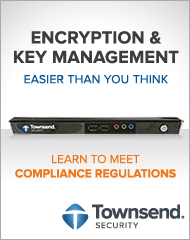

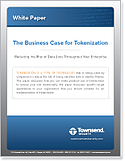

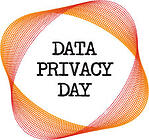 Data Privacy Day (January 28, annually) is an annual international celebration designed to encourage awareness about privacy and education on best privacy practices. Sponsored by companies such as Intel, eBay, and Google, the day is designed to promote awareness on the many ways personal information is collected, stored, used, and shared, as well as education about privacy practices that will enable individuals to protect their personal information.
Data Privacy Day (January 28, annually) is an annual international celebration designed to encourage awareness about privacy and education on best privacy practices. Sponsored by companies such as Intel, eBay, and Google, the day is designed to promote awareness on the many ways personal information is collected, stored, used, and shared, as well as education about privacy practices that will enable individuals to protect their personal information. 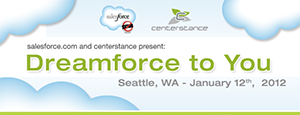 As the social revolution moves into the business world, protecting your data is more important than ever. This was a key takeaway for attendees of the recent “Dreamforce to You” event in Seattle, WA, hosted by Salesforce.
As the social revolution moves into the business world, protecting your data is more important than ever. This was a key takeaway for attendees of the recent “Dreamforce to You” event in Seattle, WA, hosted by Salesforce.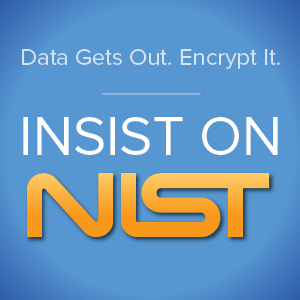 We couldn’t agree more. As a security company, this is something we have been saying since the beginning. We have offered NIST-validated AES encryption for all the major enterprise platforms for over ten years, been securing managed file transfers with PGP encryption, and recently stepped up our game with a FIPS 140-2 compliant encryption key management HSM. Simply put, we are helping organizations protect their sensitive information and meet compliance regulations with certified encryption solutions.
We couldn’t agree more. As a security company, this is something we have been saying since the beginning. We have offered NIST-validated AES encryption for all the major enterprise platforms for over ten years, been securing managed file transfers with PGP encryption, and recently stepped up our game with a FIPS 140-2 compliant encryption key management HSM. Simply put, we are helping organizations protect their sensitive information and meet compliance regulations with certified encryption solutions. I recently attended a webinar for accountants on the importance of IT security. The webinar discussed findings from the newly released 2012 Global State of Information Security Survey®, a worldwide study conducted by Pricewaterhouse Coopers, CIO Magazine and CSO Magazine. They used the information from the survey to make two important points
I recently attended a webinar for accountants on the importance of IT security. The webinar discussed findings from the newly released 2012 Global State of Information Security Survey®, a worldwide study conducted by Pricewaterhouse Coopers, CIO Magazine and CSO Magazine. They used the information from the survey to make two important points Periodically people ask me about hashes and why the use of a salt value with a hash is recommended. Let’s have a look at this topic in our last blog for 2011!
Periodically people ask me about hashes and why the use of a salt value with a hash is recommended. Let’s have a look at this topic in our last blog for 2011!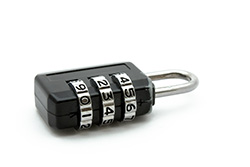 Well, take the example of your banking PIN code. It might be 4 or 5 digits in length. From the point of view of modern computers, that is a really small set of numbers to test against a SHA-256 algorithm. Only 9,999 values for a 4-digit banking PIN code. That is going to take less that a second to run through all of the possibilities. So this is where a salt value can come in handy. If you are creating a hash value of very small bit of data, you can append a salt value to the original data and make it really hard to attack that hash value. And that’s why using salt with your hashes is often a recommended security practice.
Well, take the example of your banking PIN code. It might be 4 or 5 digits in length. From the point of view of modern computers, that is a really small set of numbers to test against a SHA-256 algorithm. Only 9,999 values for a 4-digit banking PIN code. That is going to take less that a second to run through all of the possibilities. So this is where a salt value can come in handy. If you are creating a hash value of very small bit of data, you can append a salt value to the original data and make it really hard to attack that hash value. And that’s why using salt with your hashes is often a recommended security practice.

